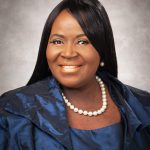Early Music Now’s Plaine & Easie

Plaine & Easie, L-R: Whittaker, Kleinerman, Tsatsanis, Lenti. Photo courtesy of Plaine & Easie website.
Melancholy love poetry had a particular flowering in the Elizabethan age, and it found particular reinforcement in settings for lute and voice. John Dowland (1563-1626) mastered and shaped the form and played and sang his way to fame among the elite of Western Europe.
Saturday afternoon, Plaine & Easie performed several Dowland songs and dances on an Early Music Now concert at All Saints’ Cathedral. Lutenist John Lenti and soprano Linda Tsatsanis made Dowland’s music sound not only beautiful, but urgent and even modern.
Tsatsanis sings with the expressive intensity of a great cabaret chanteuse. She sold the songs as Edith Piaf did. The body language underscored surprising and thrilling tricks with timbre and pitch inflection that made the music vivid and shared its emotional ache.
I’m thinking especially of her gripping renditions of Dowland’s famous Flow, my tears and In darkness let me dwell. In the line “jarring sounds to banish friendly sleep,” her rhythms, accents and consonants startled with their violence. In “And tears and sighs and groans my weary days,” the sighs came out as a real sigh — musically, astonishing; emotionally, heartbreaking. These interpretive anomalies leapt at the ear from a context of flawless beauty. Tsatsanis’ voice is a rich, gleaming thing with no discernible register breaks. She sings at dead center of the pitch, except when she inflects for expressive reasons. This is a great young singer, and I suspect she’s not limited to Renaissance tunes. I’d love to hear her in a Mozart opera, or in some piano bar with the collected songs of Harold Arlen in front of her.
Lenti, likewise, is one of the finest lutenists I’ve heard. His uncommonly big sound filled the cathedral without amplification. He sorted out the knotty counterpoint in Dowland’s galliards and the song accompaniments. He, like violinist Shulamit Kleinerman and Nathan Whittaker, on the five-string bass violin (it looks and sounds like a cello), flew through blazing scale passages with ease.
Speaking of those passages: Many of them sounded like English division playing, an improvisational practice that would have been well known to Dowland. Plaine & Easie, I’m sure, either improvised them on the spot or wrote them out to simulate division style. Either way, they sounded brilliant and fitting.
Dowland spent time in Europe and collected lutesong manuscripts from all over the continent. His son published his collection in London, so lutenists there picked up Spanish, French, Flemish and Italian styles. Plaine & Easie played selections from these collections, by the likes of Alfonso Ferrabosco, Giovianni Bassono, Pierre Guédon and others. The also played English imitations of music in the Spanish style. Their witty remarks, succinct program notes and the music itself conveyed a lot of information very quickly. This program was educational in a good way.
They ended with Chi passa per ‘sta strada, a lively, lilting song for dancing. Tsatsanis belted out the verses as Lenti pounded out the chords. Between verses, each instrumentalist played a hot solo. This was no musty music history lesson. It was more like jazz.



















